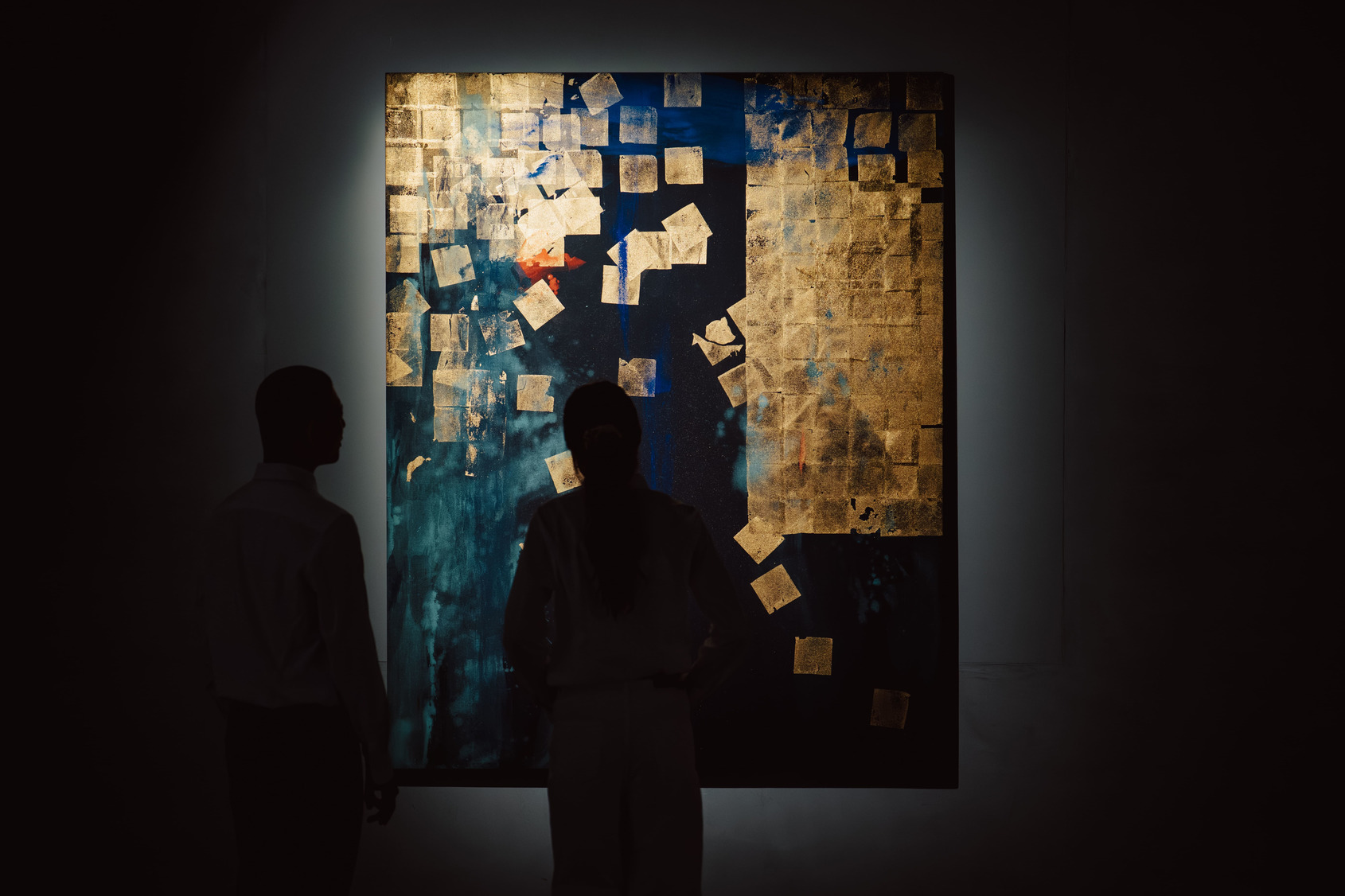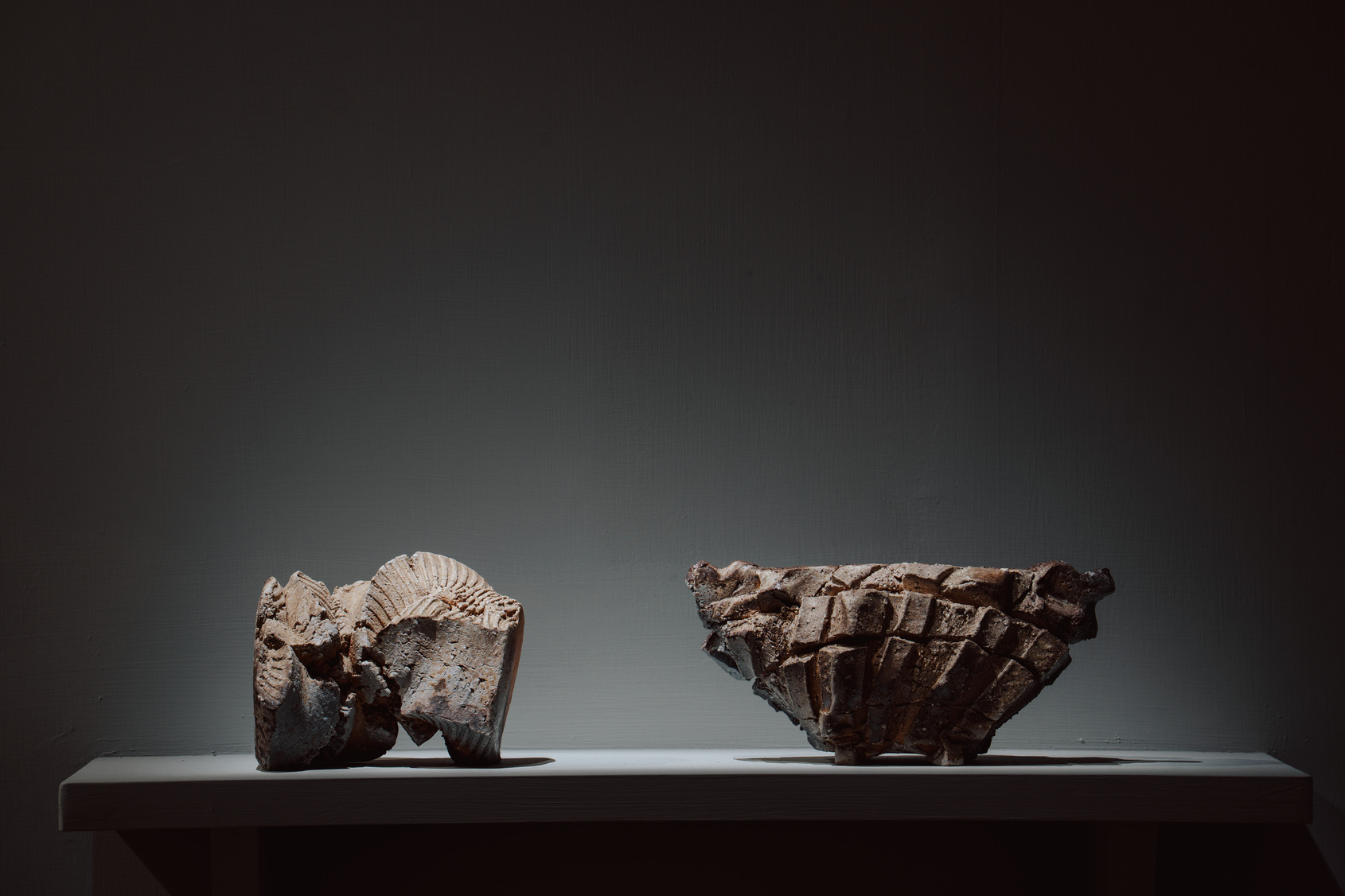What the audience usually sees first is the final presentation of an exhibition. However, what truly supports an exhibition behind the scenes is a long and detailed process of curatorial planning. From the initial spark of inspiration, through the ongoing dialogue between artists and curators, to the spatial planning and decisions around the details of each exhibit — every stage involves careful choices and thoughtful consideration. These stories often remain hidden behind the artworks and exhibition space, yet they are the essential threads that allow an exhibition to take shape.
Through this interview, we hope to guide readers behind the scenes of the exhibition, to listen to how curators, artists, and teams interact, clash, and collaborate throughout the process — facing challenges, holding onto their vision, and ultimately turning an exhibition into more than just a collection of artworks. It becomes a shared experience of culture, time, and belief. This is not only the story of an exhibition, but also a reflection of how art engages with our lives and the world around us.
Q: How did the curatorial concept originate?
Yaman Shao:
The observation of the development of contemporary art has long been a key curatorial focus at ALIEN Art Centre. In 2025, ALIEN Art Centre takes “materiality” as its curatorial theme. Following the Celestial Eyes exhibition earlier this year — which explored “Material × Intelligence” and how smart materials expand human perception — this fall’s Dust and Gold shifts the focus to “Material × Ecology”. From the microscopic textures of minerals and soil to how artists use their practices to build cultural ecologies, the exhibition invites us to see material not just as a medium, but as a way of understanding the world.
This perspective echoes broader global conversations. The 2025 London Design Biennale, under the theme “Surface Reflections”, features materials like minerals, paper, and mycelium as narrative agents. Major institutions such as Tate Modern in London and the Guggenheim in New York have also launched exhibitions examining the use and expression of material in contemporary art. Within this international context, Dust and Gold invites viewers to read each artwork as a material map — one that can be interpreted, restored, and regenerated. From origin to use, and through artistic transformation, the exhibition reconsiders the relationship between humans and matter, technology and ecology.
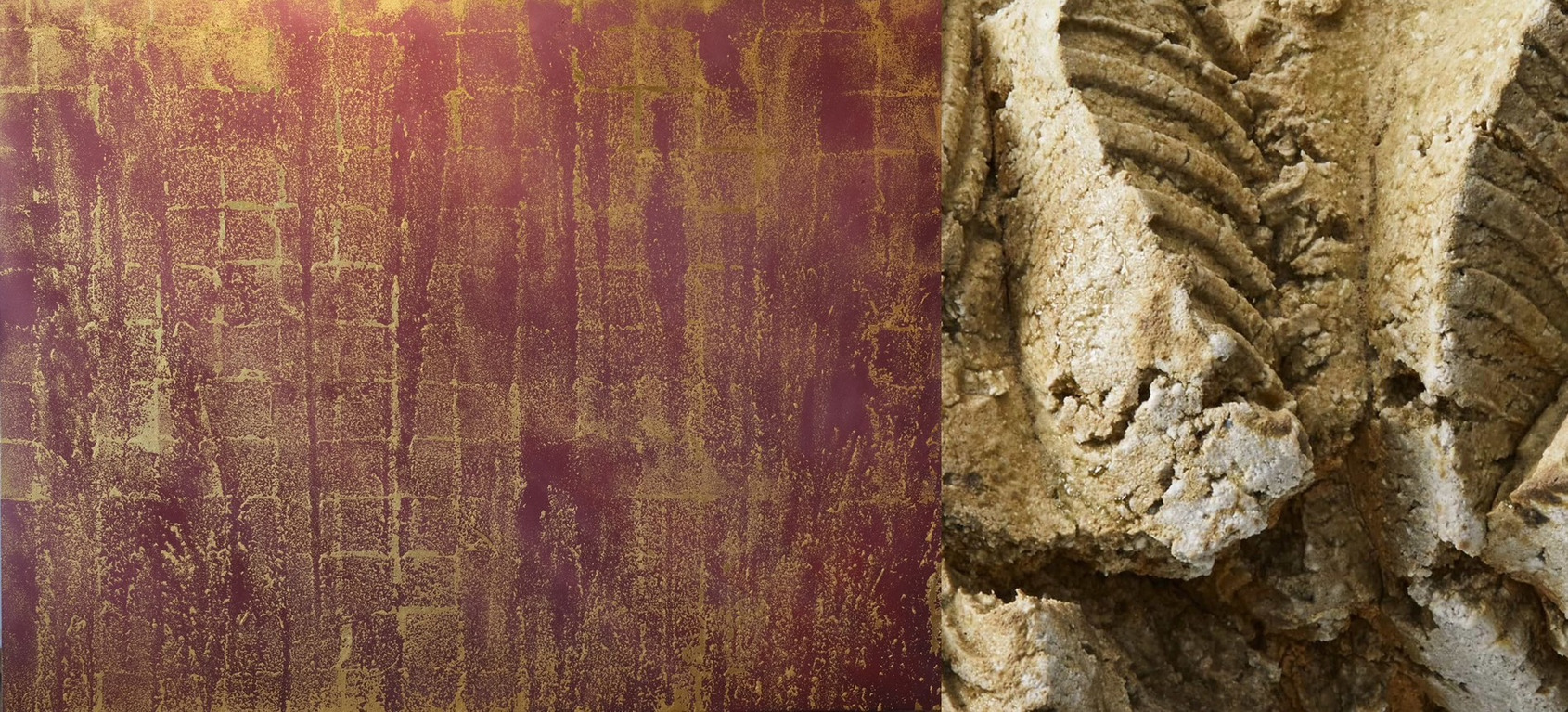 Golden Cascade - Joy © Makoto Fujimura ∕ Natural Ash Sculptural Form(detail)© Shozo Michikawa The power of art to restore, heal, and transform lies at the heart of the curatorial vision.
Golden Cascade - Joy © Makoto Fujimura ∕ Natural Ash Sculptural Form(detail)© Shozo Michikawa The power of art to restore, heal, and transform lies at the heart of the curatorial vision. I grew up during a time of rapid urban development in Taiwan, where dusty street construction was part of everyday life. Taiwan is a place that values speed and efficiency. Most of the materials I saw in the neighborhoods felt temporary or faded with time. I remember my first trip to Iceland, where I encountered the beauty of spaces shaped by nature. There, both architecture and landscape are based on living in harmony with the natural environment. In such a setting, concern for ecology and its connection to culture naturally becomes part of daily life — something I deeply admire.
Makoto Fujimura’s work, with its clear, pure colors, awakened my fascination with untouched places. His “breathing spaces,” created with translucent mineral pigments, offer a quiet focus that clears away dust — both physical and spiritual.
I believe art has the power to inspire a shift in perspective. If it can awaken a deep longing for pure, untouched places within us, then perhaps our living environment can begin to change. Speaking through space is my preferred curatorial approach. How can space create resonance? When I first encountered Shozo Michikawa’s work, to me it felt like a scaled-down version of Zaha Hadid’s landscape architecture — what seems like “irregular” lines actually follows a certain order. The space comes alive through the rhythm or “steps” guided by the artwork, making the piece a continuum between the environment and the space it occupies. Shozo Michikawa’s bold, free-spirited, and humorous style seems to tell us that if we shift our perspective just a little, nature will start to speak to us.
Eternal vitality and creativity reside within nature, and all we need to do is simply “see” it. 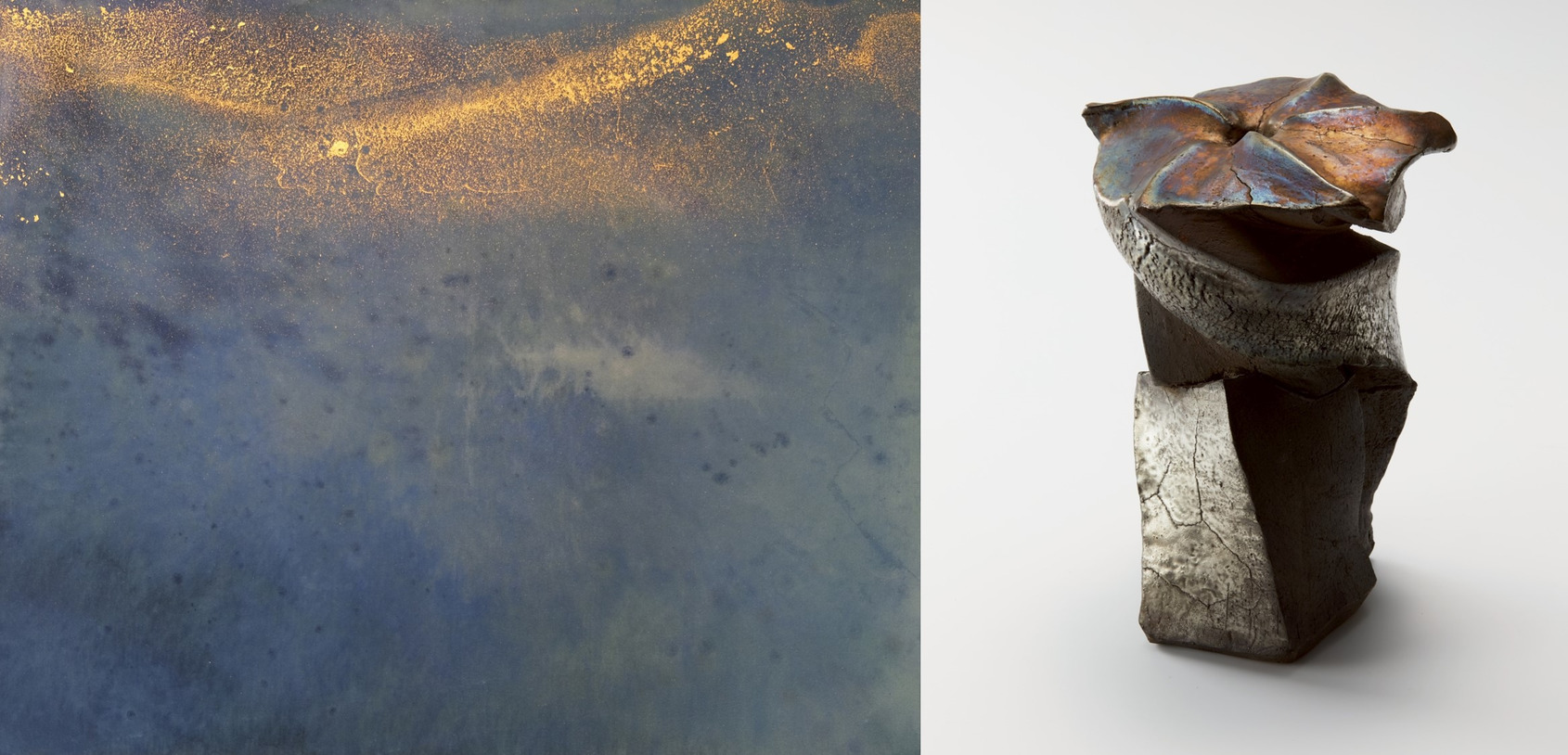 Kairos — Stardust © Makoto Fujimura ∕ SILVER Sculptural Form © Shozo Michikawa Q: What do Makoto Fujimura and Shozo Michikawa represent to you? Yaman Shao:
Kairos — Stardust © Makoto Fujimura ∕ SILVER Sculptural Form © Shozo Michikawa Q: What do Makoto Fujimura and Shozo Michikawa represent to you? Yaman Shao: Makoto Fujimura’s work pulses with flowing energy, activated by his materials — mineral pigments that come to vivid life under shifting light as viewers move. I learned from a master craftsman that Makoto Fujimura sources his pigments through inherited techniques, honoring the value of material and then, through the International Arts Movement (IAM Culture), bringing artists together for creation and workshops. This effort extends the mission of art into realms of humanitarian and cultural care — supporting relief efforts, aiding slum communities in India, and expanding the role of art beyond aesthetics.
This spirit of cycle-building and outreach was a key motivator for me curating the exhibition. Shozo Michikawa’s work resonates with Makoto Fujimura in forming a contemplative axis of “material — body — time.” With a foundation in ceramic traditions in Seto, he launched his sculptural career in London, using radical methods to disrupt conventions of pottery — earning attention globally. Beyond his creations, he established the Sasama International Ceramic Art Festival, inviting artists to engage with Shizuoka mountain villages and revitalizing communities through artistic exchange. Shozo Michikawa transforms ceramics beyond vessel-making into carriers of land memory and cultural connection.
Throughout Shozo Michikawa’s artistic career, we see cultural heritage gaining recognition through the discovery of essence and international exchange. Q: Any memorable anecdotes from preparation? Yaman Shao: Shozo Michikawa’s work takes on unexpected colors due to variations in climate, soil composition, and changes in temperature and humidity. Holding up a tea bowl, he pointed to a pattern resembling a whale and said, “This bowl actually fired with a whale image like Ito Jakuchu’s — it’s amazing.” What Shozo Michikawa loves most about clay sculpture is that he can’t fully control the outcome. Sometimes, the clay reveals its own form in ways he didn’t expect.
When I asked him about the most memorable feedback from viewers, he said most people draw energy from his work because
everything alive is connected to “rotation” — from DNA structures to tornadoes and hurricanes. One cancer patient placed his work in their hospital room and found strength to fight the disease through it. Another elderly woman in Chicago, who could no longer walk, said that just looking at his work every day made her happy, as if she had returned to her youth.
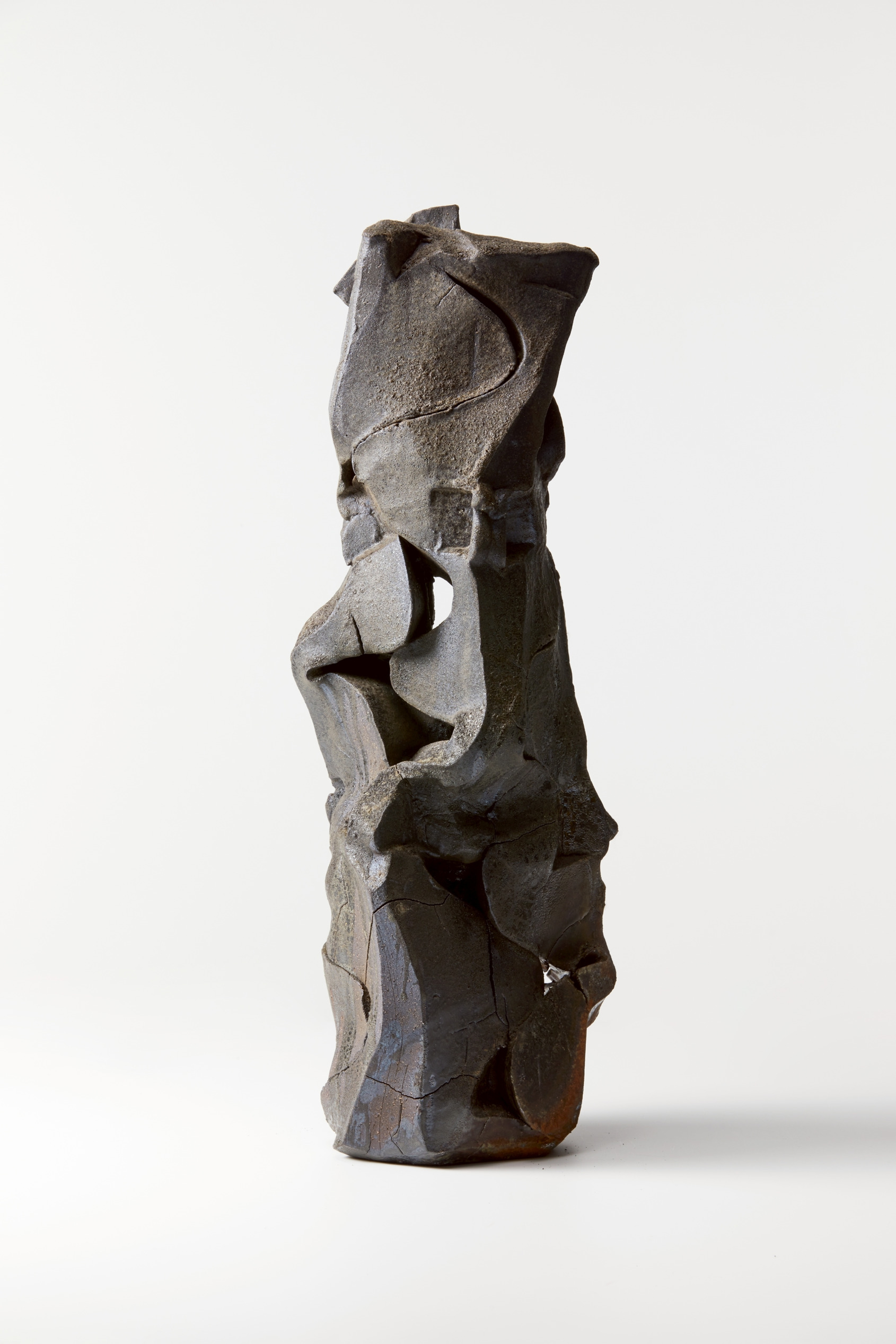 Volcano Sculptural Form © Shozo Michikawa
Volcano Sculptural Form © Shozo Michikawa Makoto Fujimura has a story about a bouquet of flowers. It was shortly after he and Judy got married. Judy was busy with her master’s studies, and he was teaching part-time at school, only painting at home when he had free time. Life was tough, and they often lived on canned food. One night, he had no money left, rent was due, and weekend expenses weighed heavily on his mind. He just sat and waited for Judy to come home. When the door opened, she was holding a bouquet of flowers. He angrily said, “We can’t even afford to eat, how can you buy flowers?” Judy softly replied, “The soul needs nourishment too.”That sentence felt like a light shining in his heart —
as an artist, he should be feeding the soul, but his worries about the future had clouded his original passion. Since then, that bouquet and her words have stayed with him, reminding him of his identity and mission as an artist.
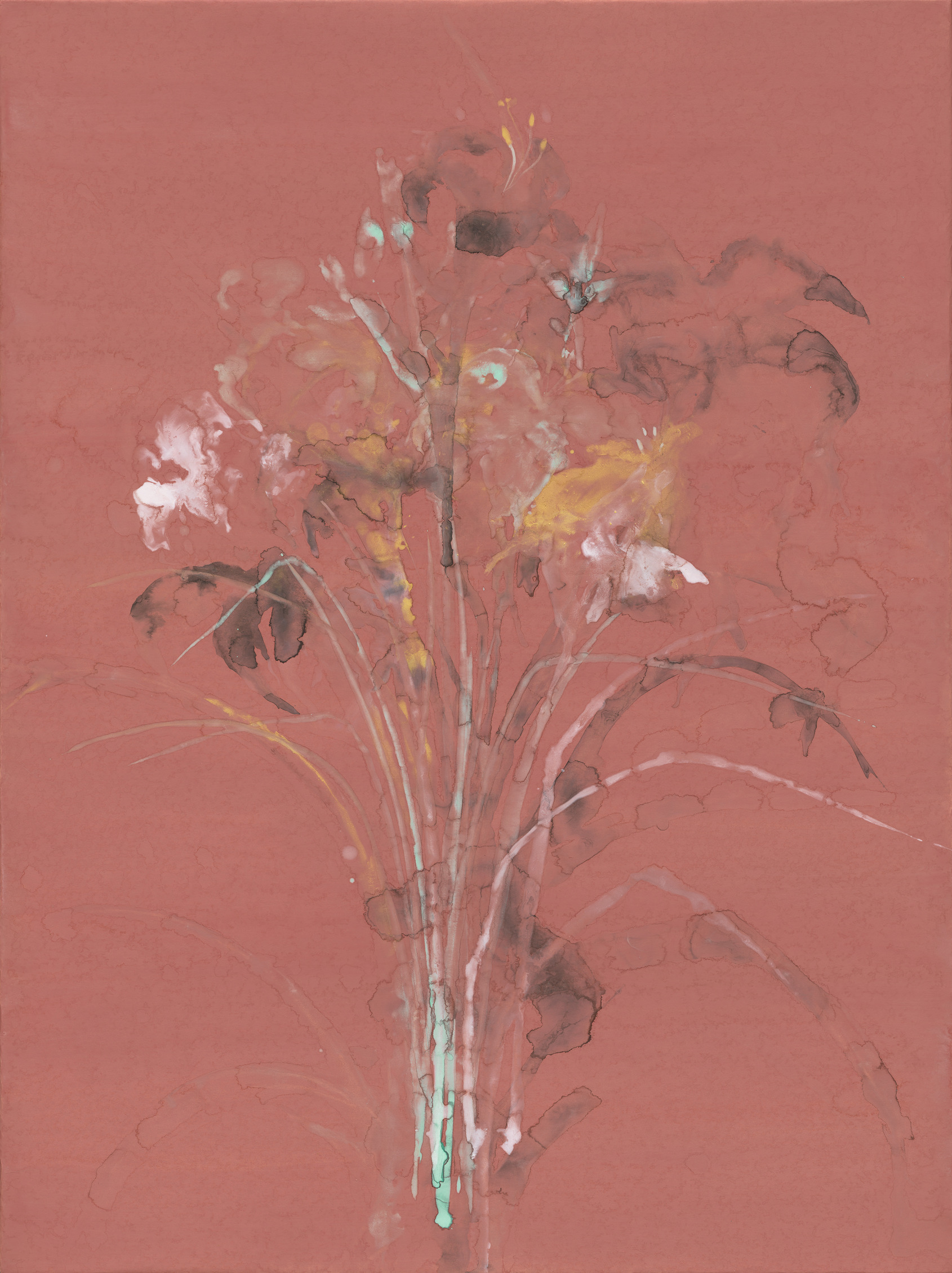 Callis Lilies © Makoto Fujimura Q: What contemporary issues do these works respond to? Yaman Shao:
Callis Lilies © Makoto Fujimura Q: What contemporary issues do these works respond to? Yaman Shao: While rooted in the materials and techniques of traditional Nihonga, Makoto Fujimura’s work merges the philosophies and language of Western abstract expressionism, forging a new path in contemporary art. Michikawa, on the other hand, developed his understanding of clay in Seto, Japan’s historic center of ceramic art, but began his career in sculpture in London. His unconventional approach was initially unrecognized within traditional cultural circles, yet by challenging preconceived notions of ceramics through his own methods, he shifted how ceramic art is perceived — drawing attention from international art institutions.
To me, their journeys speak directly to the museum’s role as a bridge between the local and the global, encouraging cross-cultural collaboration and openness.
The visual languages shaped by both artists offer more than aesthetic value — they carry a restorative potential in today’s uncertain and fractured world, contributing to the healing of both material and cultural ecologies. Q: What message does this exhibition wish to convey to the public? Yaman Shao: Silver leaf, over time, alters its hue; clay, refined through fire, transforms into vessels of resilience — just as human beings, tempered by the crucible of circumstance, acquire new qualities of being. Through this exhibition, I hope to guide audiences to embrace fractures and the vitality they yield. We hope this exhibition encourages viewers to embrace the cracks — and the vitality that can emerge from them —
using the power of beauty as a means of restoration. Whether in environmental or cultural contexts, it seeks to pour hope and life into the fractured spaces of our world. 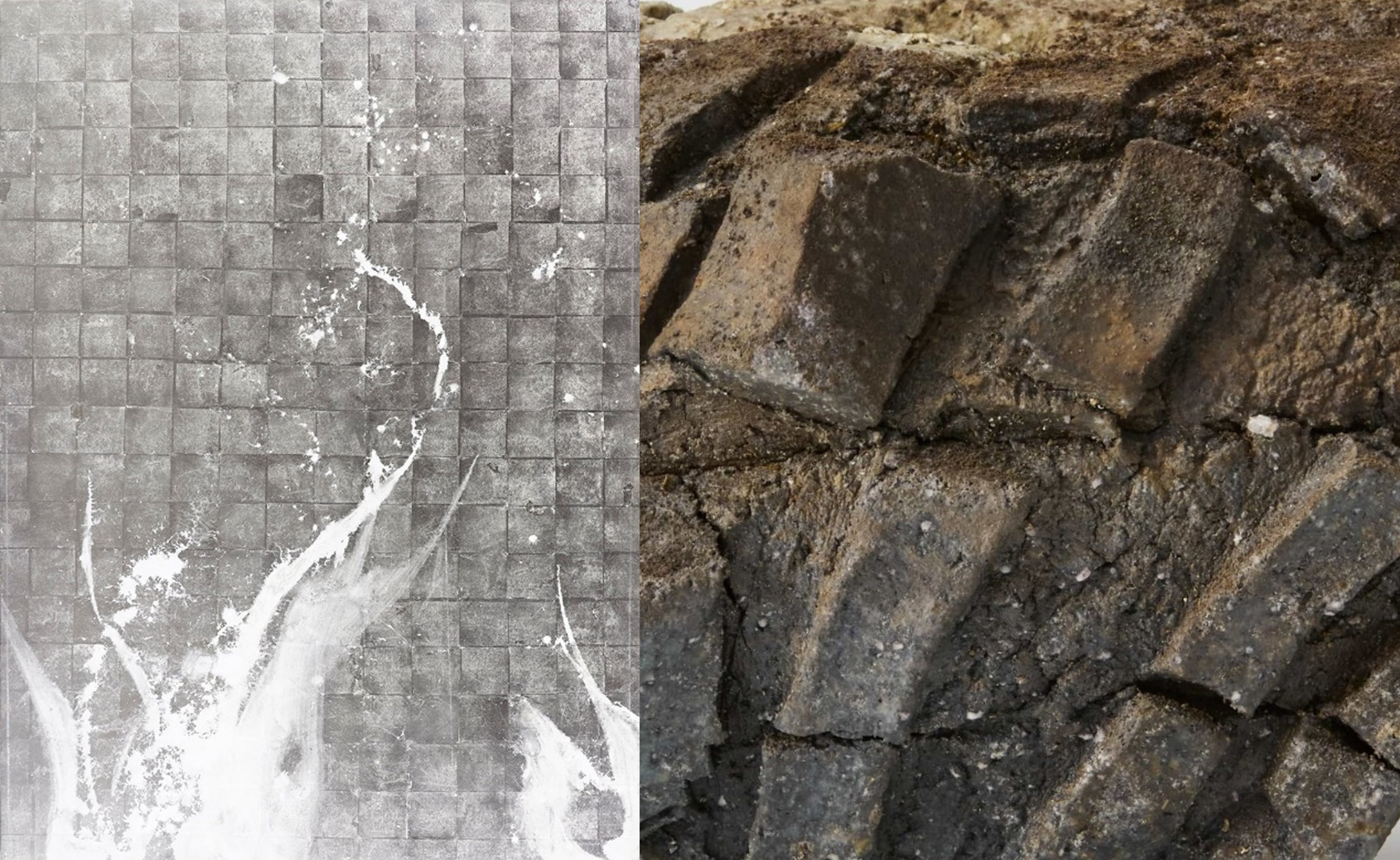 Water Flames ─ Silver © Makoto Fujimura ∕ Natural Ash Sculptural Form(detail)© Shozo Michikawa Q: How would you describe the exhibition’s imagery in a few sentences? Yaman Shao:
Water Flames ─ Silver © Makoto Fujimura ∕ Natural Ash Sculptural Form(detail)© Shozo Michikawa Q: How would you describe the exhibition’s imagery in a few sentences? Yaman Shao: The dust in the air, the undercurrents of sound, all diffuse gently in the light... Makoto Fujimura’s works feel more like a performance in motion. Amazonite, red coral, azurite, malachite, obsidian — each pigment traces a flowing path that connects to our own embodied experiences. If the colors on the wall open a window into an inner landscape, then the sculptures standing in the space become a shifting terrain. Shozo Michikawa’s works resemble volcanic landscapes dusted with snow — powerful, yet quiet. Drawing strength from nature, his sculptures radiate an energy that the viewer can intuitively sense and even take joy in.
As the layered dialogue between the wall-based works and spatial sculptures unfolds, viewers move through the space. With just a slight shift in perspective, nature begins to speak. Q: Cross-disciplinary programs during the exhibition? Yaman Shao: The exhibition Dust and Gold is divided into two chapters —
“The Luminous Chapter”2025.09.28 (Sun.) – 2026.04.06 (Mon.) and
“The Formative Chapter”2026.04.15 (Wed.) – 2026.08.30 (Sun.).
The Luminous Chapter invites viewers to see the possibility of restoration through “how light is born.” The Formative Chapter leads viewers to explore the gestures and the posture of time behind the works through “how force takes shape.” Makoto Fujimura responds to restoration and hope with the slow layering of minerals and gold leaf. Shozo Michikawa presents the earth’s strength and the beauty of impermanence through twisted clay and fire marks.
The opening event of The Luminous Chapter invites musicians YuYing Hsu, Zhen-Yu Lian, and Wen-Hui Tsai to create a sound environment that offers viewers another way of seeing. Audiences choose pieces and improvise according to their feelings — not to perform, but to listen, sense, and respond. This also gives voice to emotions that are hard to express.
The opening event of The Formative Chapter will feature butoh artist Chia Hu, who introduces a perspective of “slow observation” through butoh dance. In the dialogue between material, body, and time, viewers read the meaning of Dust and Gold — elevating the visual language of crack repair into the practical spirit of cultural restoration.
Yaman Shao, Director and Chief Curator of ALIEN Art Centre, is deeply engaged with the evolving currents of contemporary art. Her curatorial approach centers on “speaking through space,” orchestrating artworks, materials, and spatial layout to guide viewers in experiencing layered dimensions — of time, physicality, and spirit. In Dust and Gold, she places materiality at the core. Drawing from the creative practices of Makoto Fujimura and Shozo Michikawa, she demonstrates how art embodies the power to restore, heal, and transform. To Yaman, art is not merely a medium of creation — it is a way to understand the world and reshape perception. Through thoughtful spatial design and thoughtful arrangement of works, she encourages viewers to engage with the exhibition at different rhythms, from varied angles and emotional stances — creating a resonance between art and audience.






